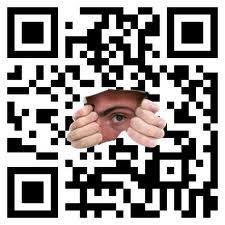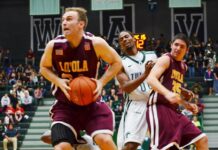Technology in 2012 continues to stun and impress people around the globe on a daily basis. The iPad 3’s release date is creeping upon the United States, stirring up excitement all over. Hybrid vehicles have undergone mass production, giving people a break amidst skyrocketing gas prices. Car radios now have the ability to pause, rewind, and fast-forward programming, just like DVR systems for televisions.
One new technology, QR (Quick Response) codes, has found its way into businesses, commercials, magazines, and one other surprising location—the Jesuit yearbook. Through the work of faculty members and students, for the first time in JCP history, students could receive information from a number of QR codes in the 2011-2012 school yearbook.
QR codes, sometimes referred to as “rectangular barcodes,” are two-dimensional matrix encryptions that have the ability to hold thousands of alphanumeric characters of information.
When you scan a QR code on an app with your smartphone, your device may activate another app, such as the iPhone’s Safari; open a contact card, video, picture, or play music (See link below for free iPhone QR Reader app). In its earlier days, however, QR codes were used by Toyota to mark vehicles with identification numbers.
Jesuit College Prep’s yearbook will use QR codes in a variety of ways. “Every year, as the yearbook staff, we feel limited as to the amount of pages, photos, and text we can use,” says Tim Nguyen ’12, the yearbook’s sports editor. Space in a yearbook is crucial, since no one wants to have a 500-page yearbook.
One opportunity the QR codes will open is the incorporation of videos. When a person scans the tiny barcode on the page, their device will open up a video relating to that certain page. “[Each video] has a capacity of about 1 gigabyte, or 5 minutes of HD video,” says Nguyen.
Another gate the QR codes will open is more room for pictures. At Jesuit sporting events, for example, hundreds of pictures are taken, but only a few can be posted into the yearbook. With the new codes, many more pictures will be able to be opened online. The yearbook plans to use them for sporting events, student council, Prom/Homecoming, school events such as Ranger Day, clubs, and academic pages.
The QR codes posted in the yearbook will last 30 years from the day they’re created. Jesuit plans to use Balfour Yearbooks, Inc. to generate the codes and provide the server space. Each code goes for about $50.
Tim Nguyen hopes the unrestrictive price will draw clubs and sports teams to opt for the QR codes. “With that $50, any club or sport can submit their videos, but they will be funding themselves,” Nguyen said. Jesuit’s yearbook staff will submit the video to Balfour, and then Balfour will create the server space and submit the code back to place in the yearbook.
The use of QR codes in Jesuit’s yearbook unlocks endless possibilities. More memories can be cherished, making the technology behind QR codes very useful. The incorporation of QR codes will arguably change the yearbook forever.
Link to General Information on QR Codes—
(http://www.socialmediaexaminer.com/how-qr-codes-can-grow-your-business/)
(http://itunes.apple.com/us/app/scan/id411206394?mt=8&ls=1)






